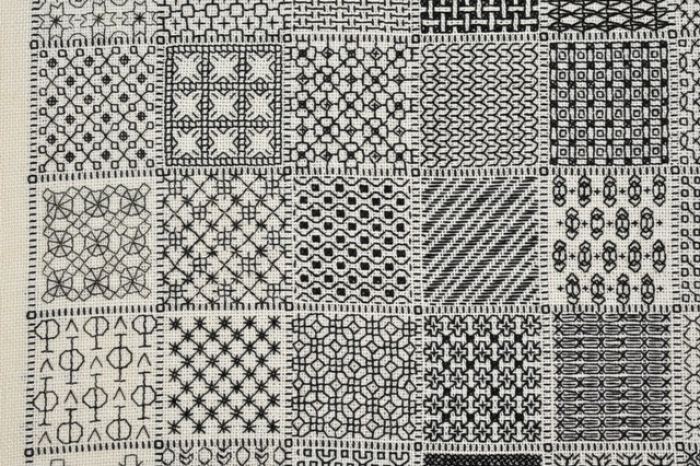 | ||
Blackwork tutorial an introduction to blackwork
Blackwork, sometimes historically termed Spanish blackwork, is a form of embroidery generally using black thread, although other colors are also used on occasion. Sometimes it is counted-thread embroidery which is usually stitched on even-weave fabric. Any black thread can be used, but firmly twisted threads give a better look than embroidery floss. Traditionally blackwork is stitched in silk thread on white or off-white linen or cotton fabric. Sometimes metallic threads or coloured threads are used for accents.
Contents
- Blackwork tutorial an introduction to blackwork
- Blackwork embroidery a step by step guide
- Technique
- History
- Modern blackwork
- References
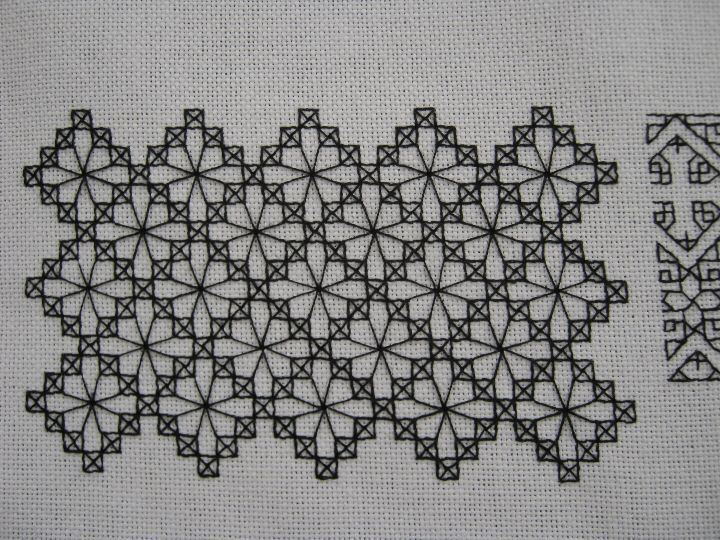
Scarletwork is like blackwork, except it is sewn with red thread.
Blackwork embroidery a step by step guide
Technique
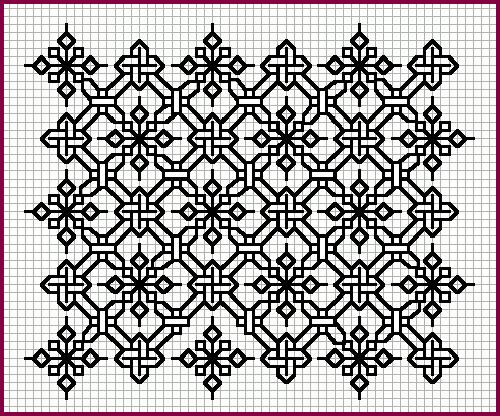
The stitches used for counted thread blackwork are double running or holbein stitch, backstitch, and sometimes stem stitch. Historically it was done on plain weave fabric. Modern stitchers often use even weave fabric made especially for counted thread work.
Historically, there are three common styles of blackwork:
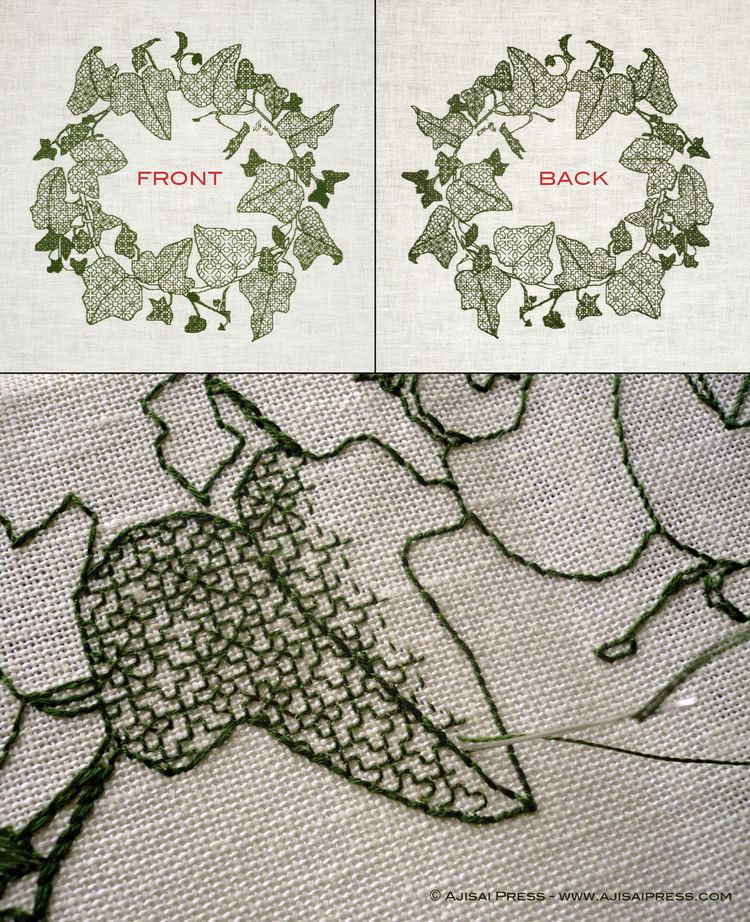
History
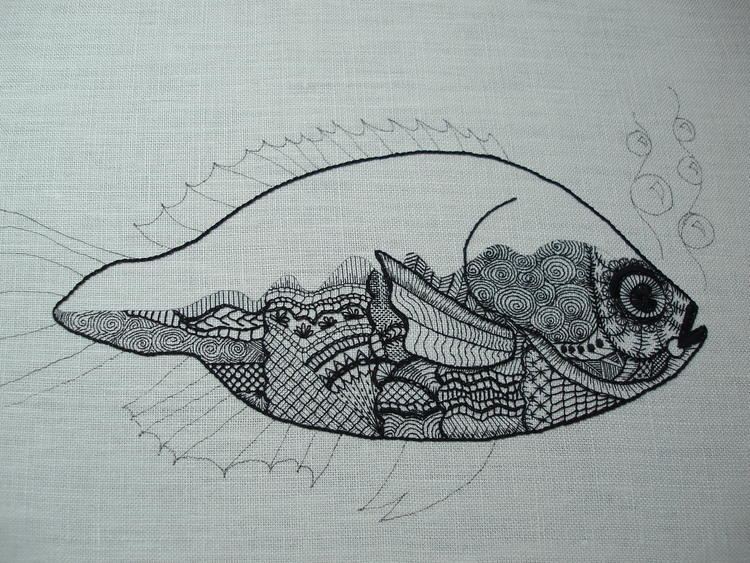
Historically, blackwork was used on shirts and chemises or smocks in England from the time of Henry VIII. The common name "Spanish work" was based on the belief that Catherine of Aragon brought many blackwork garments with her from Spain, and portraits of the later 15th and early 16th centuries show black embroidery or other trim on Spanish chemises. Black embroidery was known in England before 1500. Geoffrey Chaucer in the Canterbury Tales describes the clothing of the miller's wife, Alison: "Of white, too, was the dainty smock she wore, embroidered at the collar all about with coal-black silk, alike within and out."
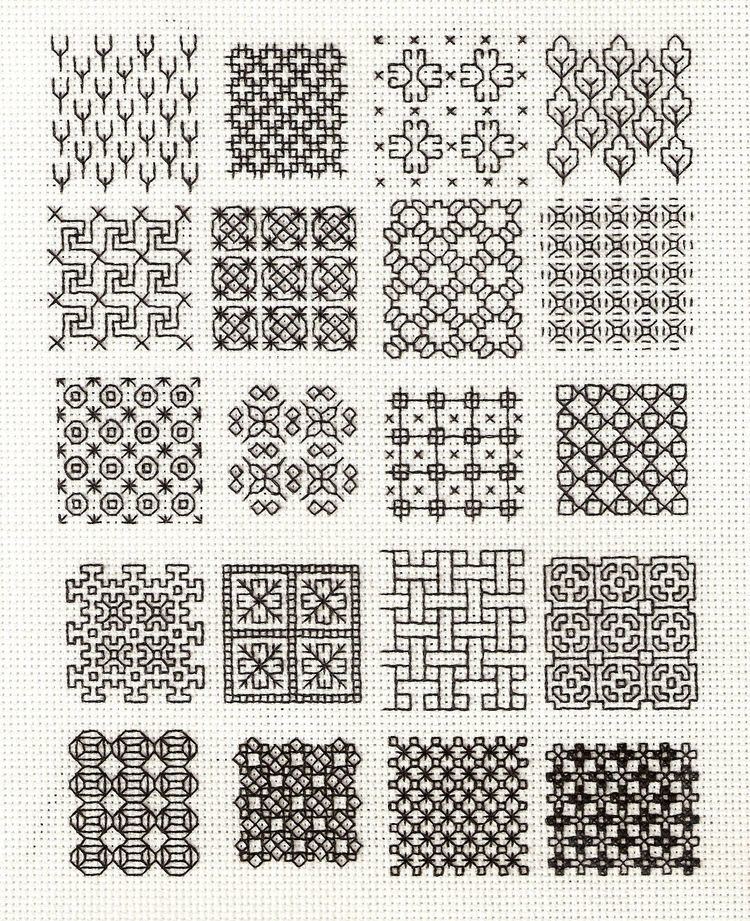
Blackwork in silk on linen was the most common domestic embroidery technique for clothing (shirts, smocks, sleeves, ruffs, and caps) and for household items such as cushion covers throughout the reign of Elizabeth I, but it lost its popularity by the 17th century. (See also 1550–1600 in fashion.)
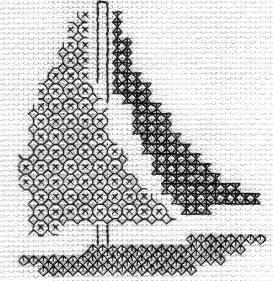
Historic blackwork embroidery is rare to find well-preserved, as the iron-based dye used was corrosive to the thread, and there are currently no conservation techniques that can stop the decay. Black embroidery silk from outside England, such as Spain, contained less iron in the black dye and so blackwork worked using non-English silk tends to survive in better condition.
Modern blackwork
Blackwork remains popular. Common subjects among hobbyists include chessboards, maps, Tudor houses, roses and cats. Much of the success of a blackwork design depends on how tone values are translated into stitches.
Today, the term "Blackwork" is used to refer to the technique, rather than the colour combination.
